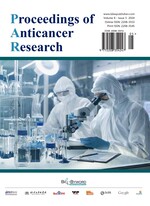Abstract
Lautropia mirabilis is an opportunistic pathogen that typically causes intestinal and oral infections when the body’s immune system is compromised or the microbial flora is imbalanced. Respiratory infections caused by Lautropia mirabilis are extremely rare. The symptoms and severity of Lautropia mirabilis infection may vary depending on individual differences and the site of infection. Through a review of relevant literature and this case study, it has been observed that Lautropia mirabilis may also cause pulmonary infectious diseases, and in immunocompromised patients, it can lead to severe infections, potentially resulting in death.
References
Gerner-Smidt P, Keiser-Nielsen H, Dorsch M, et al., 1994, Lautropia mirabilis gen. nov., sp. nov., A Gram-Negative Motile Coccus with Unusual Morphology Isolated from the Human Mouth. Microbiology (Reading), 140(Pt 7): 1787–1797. https://doi.org/10.1099/13500872-140-7-1787
Li S, Pan Y, Weng W, et al., 2015, Analysis of Epidemiological, Aetiological, and Prognostic Factors of Lung Infection After Lung Transplantation. Chinese Clinical Journal of Thoracic and Cardiovascular Surgery, 22(10): 948–953.
Muro M, Soga Y, Higuchi T, et al., 2018, Unusual Oral Mucosal Microbiota After Hematopoietic Cell Transplantation with Glycopeptide Antibiotics: Potential Association with Pathophysiology of Oral Mucositis. Folia Microbiol (Praha), 63(5): 587–597. https://doi.org/10.1007/s12223-018-0596-1
Lin Y, Lin J, Chen F, 2018, Isolation and Identification of A Strain of Lautropia mirabilis in Respiratory Specimens. Journal of Clinical Investigation, 36(10): 795–797.
Rossmann SN, Wilson PH, Hicks J, et al., 1998, Isolation of Lautropia mirabilis from Oral Cavities of Human Immunodeficiency Virus-Infected Children. J Clin Microbiol, 36(6): 1756–1760. https://doi.org/10.1128/JCM.36.6.1756-1760.1998
Xu S, Lou J, 2021, Distribution and Drug Resistance Characteristics of Pathogenic Bacterial Infections and Risk Factors After Lung Transplantation. Proceedings of the 2021 China Tumour Marker Academic Conference and the 15th Tumour Marker Young Scientist Forum, 2021: 2.
